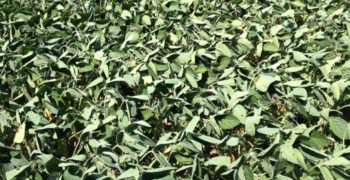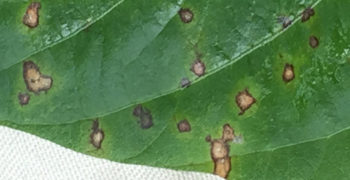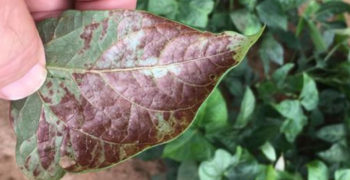Background:
White mold is also known as Sclerotinia stem rot. This disease is prevalent in cooler growing regions. White mold causes significant yield losses, especially in the cool, wet seasons. It appears as a fluffy, white growth on soybean stems. It can be observed early in the R3 to R6 stages as the nodes have gray to white lesions. The lesions rapidly grow above and below the nodes. The growth is very rapid during periods of high relative humidity.
Life Cycle:
Sclerotia survives in the soil for several years. It begins when mushroom-like structures, apothecia, form on the soil surface from the fungus. Apothecia typically measures ¼ to ½ inches in diameter. Spores from the structures infect wilting soybean flowers and make their way down to the stem.
Scouting (R3-R6):
When scouting for white mold, look on the nodes for gray to white lesions and fluffy, white growth on soybean stems.
Management:
- Rotate non-host crops such as corn or small grain for at least two or three years to help reduce the number of sclerotia in the soil.
- Plant non-susceptible hybrids.
- Spray foliar fungicides before infections can begin for maximum effectiveness.




